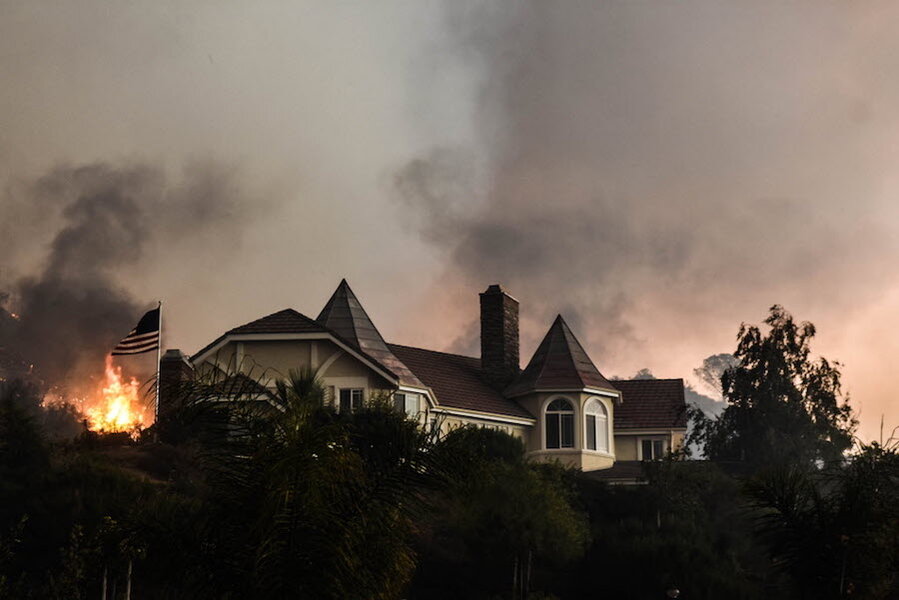How can homeowners prepare for the Santa Clarita fire?
Loading...
Eighteen homes have been destroyed, one has been damaged, and 1,500 have been evacuated after the Sand Fire was first reported at 2 pm Friday and grew to 22,000-acres by late Saturday in the Sand Canyon area of the Santa Clarita Valley.
On Sunday morning, the fire was 10 percent contained, according to a press release by the Angeles National Forest. The night before, in the midst of updates about evacuations and safety, the Angeles National Forest, where the fire has taken hold, posted a tweet.
Involvement of fire personnel has increased from about 300 on Friday to "over 1,673 firefighters...engaged in initial attack," according to the Angeles NF. Other resources being used are 122 engines, 39 hand crews, 15 helicopters, and eight dozers, according to the press release.
While fire crews are responding from all sides – the ground and the air – responders emphasize that residents also have responsibilities when a fire comes to their neighborhood. “I give talks all the time about how to protect yourself against wildfires in the urban community and the first thing I tell them is 'The fire department may not come,’” San Bernardino County Fire Battalion Chief Michael Wakoski told KVCR’s Natalya Estrada.
“We don't have a fire truck for every house. We work cooperatively throughout the summer because not one department can handle the situation when it gets bad,” Chief Wakoski said.
In other words, relying on the fire department may not be enough to save your home. Angeles NF advises homeowners to fireproof their grounds and gutters.
“Every year I wonder what would happen if a fire came up this canyon,” says homeowner Debbie Tocher, in a CAL FIRE video called “CAL FIRE Inspects for Defensible Space,” “and that’s why it’s important for my husband and me to be ready and prepared for a wildfire.”
Fireproofing includes clearing two “defensible space” zones. The first, a 30-foot buffer around the house, should have no dead vegetation; gutters should be clean; tree branches should be 10 feet from other trees, the chimney, and any structures that could catch fire; there should be no wood piles; there should be no vegetation near windows; and areas under decks should be clean.
Zone 2 extends from 30 to 100 feet past the house and should have cut or mown grass, horizontal and vertical space between shrubs and trees, and no more than three inches of dead vegetation.
These procedures help keep fires from becoming unmanageable. “Most fires start at ground-level and then move up almost like a ladder from the grasses to the brush and into the trees,” Chelsea Fox, CAL FIRE Fire Prevention Specialist, explains in the video. “Once a fire gets into the tops of the trees, it becomes much more difficult for us to stop it.”
Landscaping near a home will not necessarily increase the risk of fire. Instead, it could make a home more resilient if fire-resistant plants such as Beach Carpet Saltbush and Island Bush Snapdragon are included, Ms. Fox says.
Of course, firefighters hope to get to every home that they can as fast as they can. “When I smell smoke, I got to go,” one firefighter says in the US Forest Service video, “The Heart of a Firefighter.” “That gets into your blood and it gets into your heart. When you save a bunch of houses and people come out and shake your hand, that’s just a good feeling that stays with you the rest of your life.”








